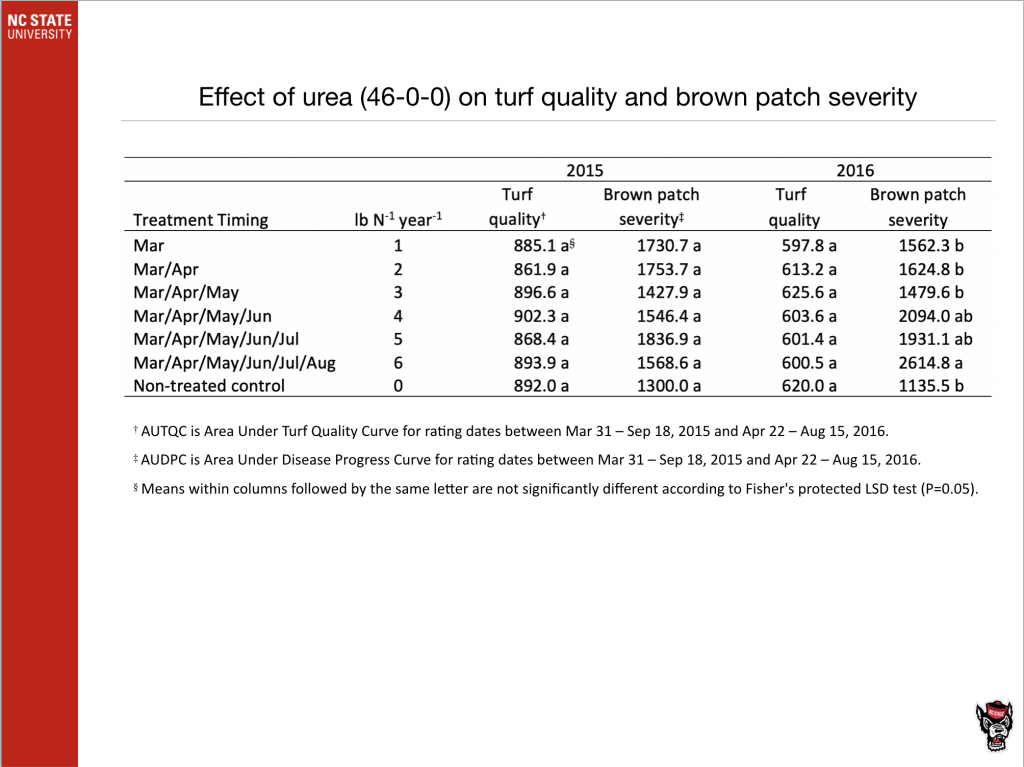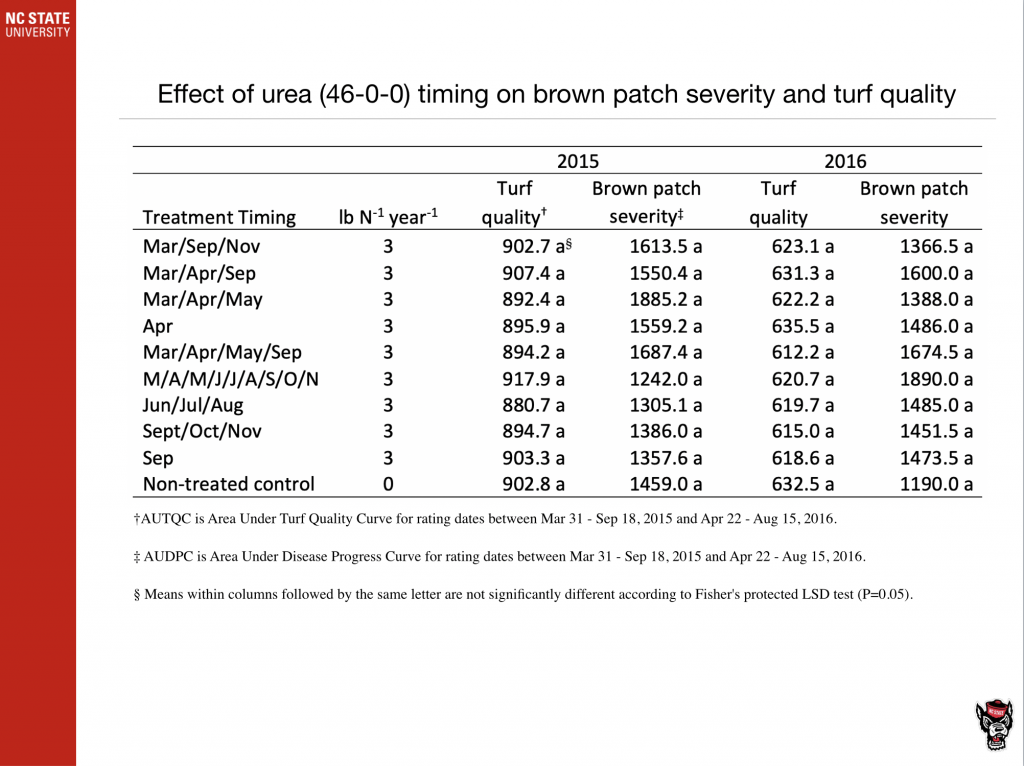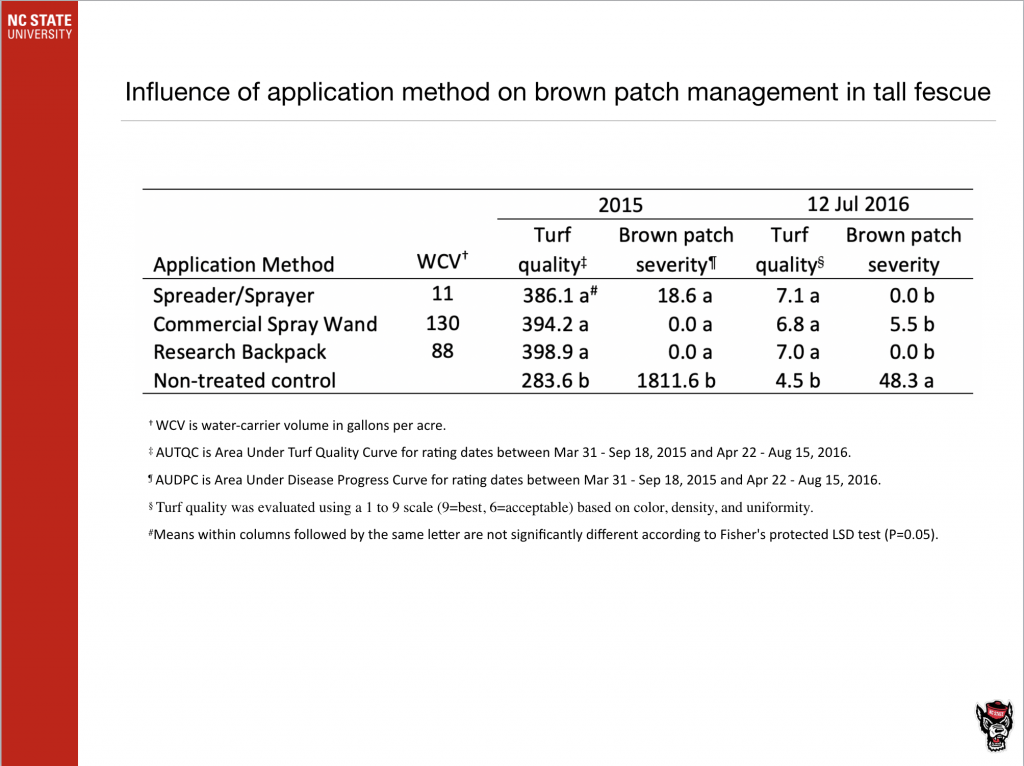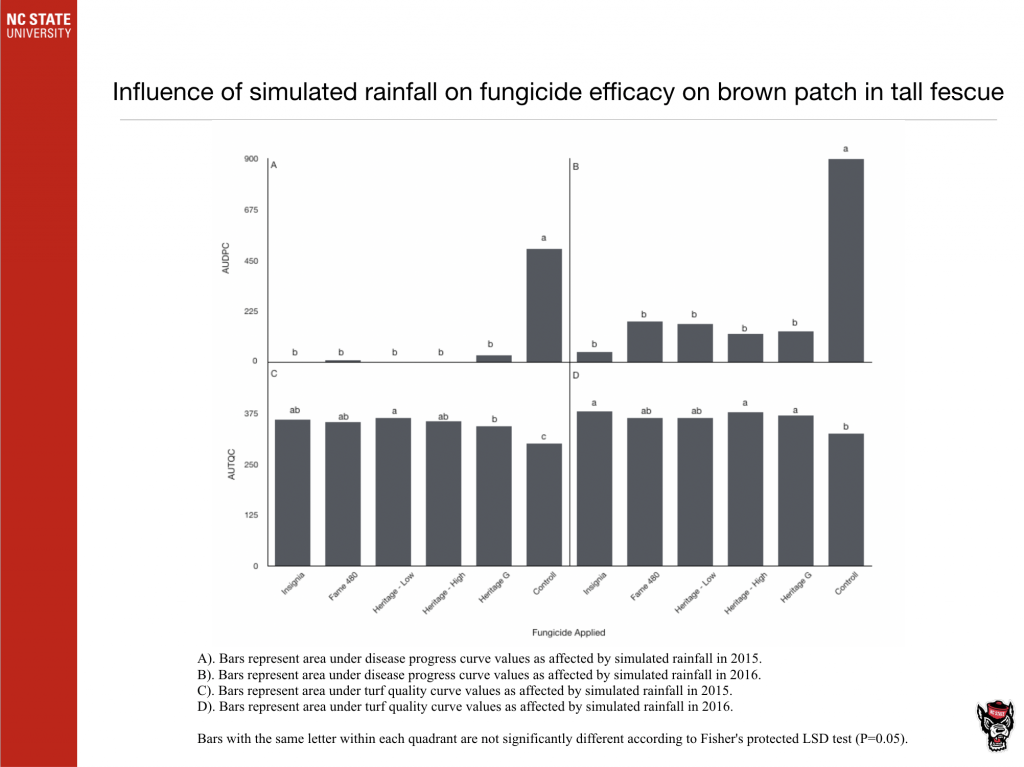Does Nitrogen Increase Brown Patch Severity in Tall Fescue?
go.ncsu.edu/readext?619921
en Español / em Português
El inglés es el idioma de control de esta página. En la medida en que haya algún conflicto entre la traducción al inglés y la traducción, el inglés prevalece.
Al hacer clic en el enlace de traducción se activa un servicio de traducción gratuito para convertir la página al español. Al igual que con cualquier traducción por Internet, la conversión no es sensible al contexto y puede que no traduzca el texto en su significado original. NC State Extension no garantiza la exactitud del texto traducido. Por favor, tenga en cuenta que algunas aplicaciones y/o servicios pueden no funcionar como se espera cuando se traducen.
Português
Inglês é o idioma de controle desta página. Na medida que haja algum conflito entre o texto original em Inglês e a tradução, o Inglês prevalece.
Ao clicar no link de tradução, um serviço gratuito de tradução será ativado para converter a página para o Português. Como em qualquer tradução pela internet, a conversão não é sensivel ao contexto e pode não ocorrer a tradução para o significado orginal. O serviço de Extensão da Carolina do Norte (NC State Extension) não garante a exatidão do texto traduzido. Por favor, observe que algumas funções ou serviços podem não funcionar como esperado após a tradução.
English
English is the controlling language of this page. To the extent there is any conflict between the English text and the translation, English controls.
Clicking on the translation link activates a free translation service to convert the page to Spanish. As with any Internet translation, the conversion is not context-sensitive and may not translate the text to its original meaning. NC State Extension does not guarantee the accuracy of the translated text. Please note that some applications and/or services may not function as expected when translated.
Collapse ▲In North Carolina, tall fescue is widely grown throughout the mountain and piedmont regions. North Carolina is in the transition zone, which is subject to hot, humid summers that predispose tall fescue to brown patch. Field trials were conducted over a two-year period (2015-2016) to evaluate the effects of nitrogen rate and timing, application method of a fungicide, and rainfall following fungicide application on brown patch severity on lawn height tall fescue. Seven rates of urea providing 0 to 6 lb N/1000 sq ft/yr were initiated each year in March with repeat applications monthly at 1 lb N/1000 sq ft. In a separate study, various timings of urea were conducted throughout the year for a total of 3 lb N/1000 sq ft/yr.
In 2015, no significant differences in disease severity or turfgrass quality were observed among the seven N rates. Only the application of 6 lb N/1000 sq ft/yr resulted in significantly higher brown patch compared to the non-treated control in 2016.
No significant differences in disease severity or turfgrass quality were observed in the timing study in both years.
Azoxystrobin was applied with a ride-on spreader/sprayer (11 gal water-carrier/acre), a commercial applicator gun (130 gal water-carrier/acre), and a research spray boom (88 gal water-carrier/acre). No differences were detected among application methods.
A rainfall event of 0.5 in. was simulated with overhead irrigation 30 minutes after application of fungicides. No differences were detected among the fungicide treatments and all provided excellent control of brown patch.
This work demonstrates that tall fescue lawns can be fertilized during the summer months at modest N rates without affecting brown patch severity. When an appropriate fungicide such as Heritage was used for brown patch management, the method of fungicide delivery did not affect brown patch suppression. Simulated rainfall up to 0.5 inches within 15 minutes of fungicide application did not compromise fungicide efficacy. These results will allow lawn care operators to be more efficient with brown patch management in tall fescue, since fungicide reapplications following ≤0.5 inches rain will not be required.






